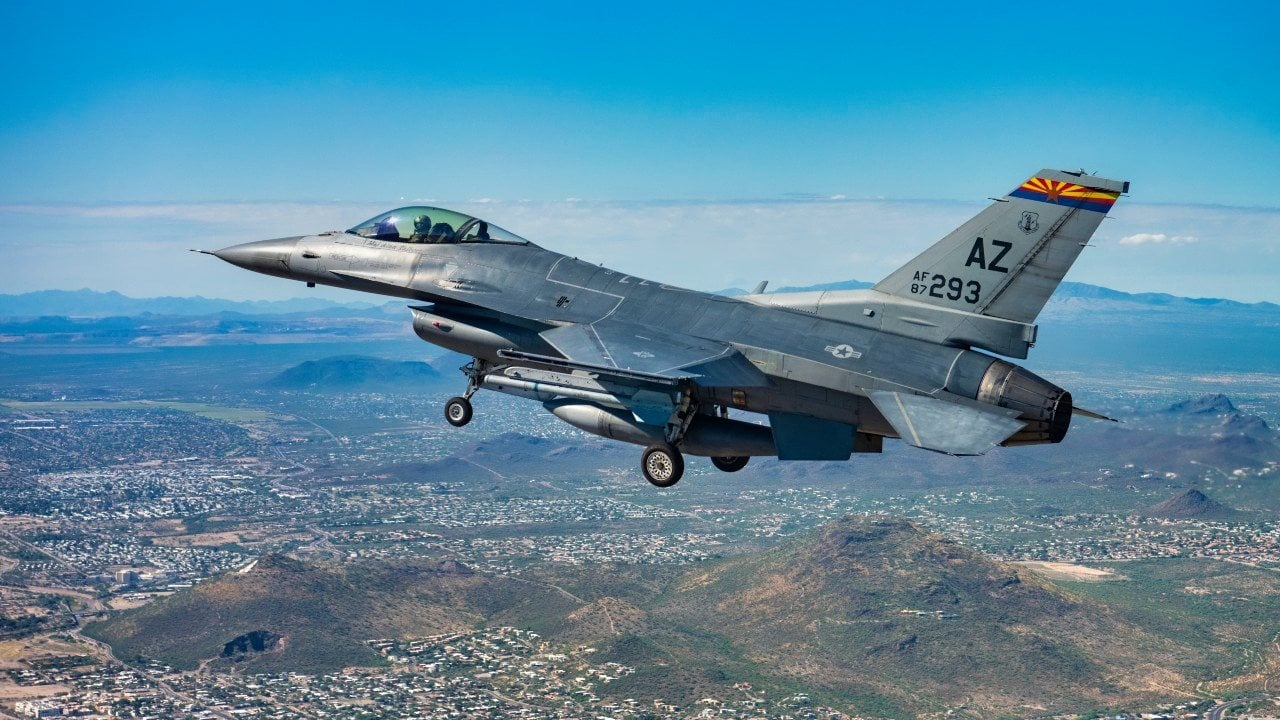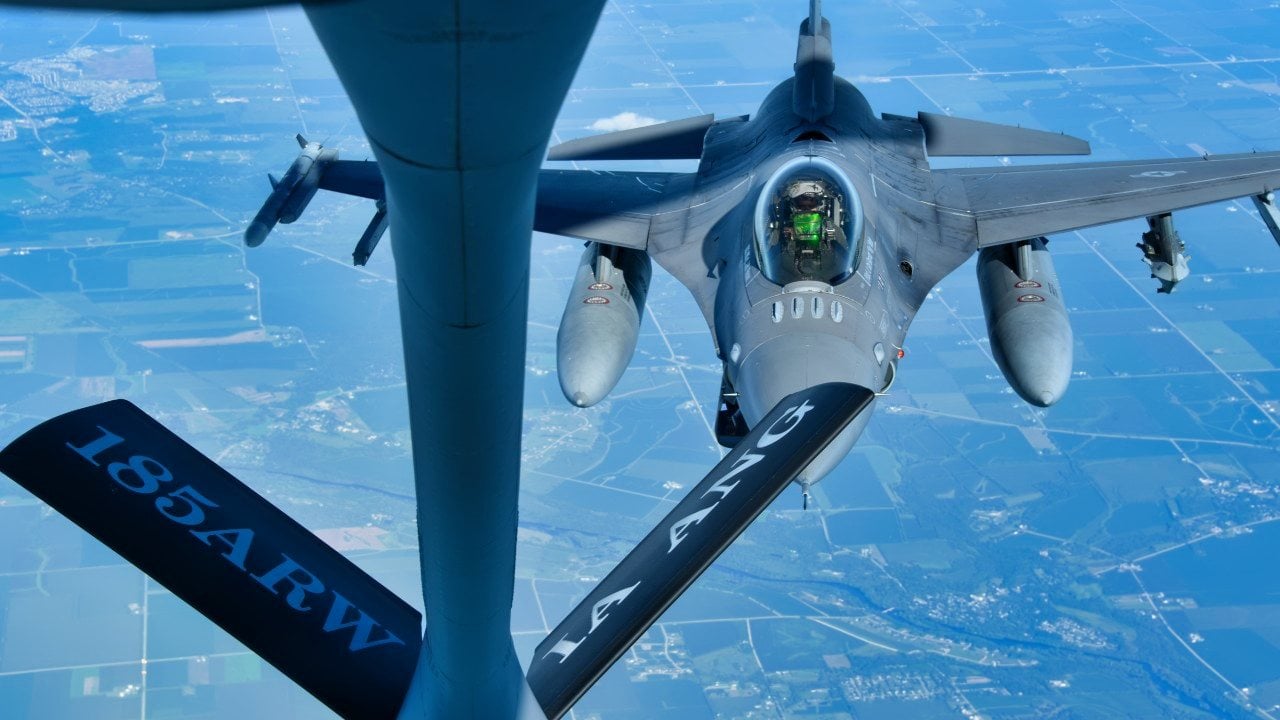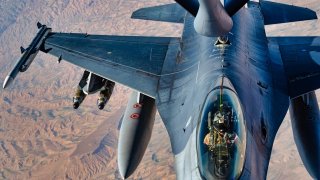Vought Model 1600: That Time the U.S. Navy Almost Got Its Own F-16
The U.S. Navy almost developed its own version of the F-16 Fighting Falcon, known as the Vought Model 1600. This carrier-capable variant, a collaboration between General Dynamics and Vought, featured structural enhancements, an arrestor hook, and a more robust undercarriage to handle carrier operations.
Summary and Key Points: The U.S. Navy almost developed its own version of the F-16 Fighting Falcon, known as the Vought Model 1600. This carrier-capable variant, a collaboration between General Dynamics and Vought, featured structural enhancements, an arrestor hook, and a more robust undercarriage to handle carrier operations.

-Despite being based on the Block 10 F-16, the Model 1600 underwent significant changes, including modifications that compromised its air superiority and interception capabilities.
-Ultimately, the Navy chose the twin-engine YF-17 over the single-engine Model 1600, which later became the F/A-18 Hornet. The Air Force, however, embraced the single-engine F-16 for its fleet.
The Navy’s Almost F-16: The Vought Model 1600 Story
The U.S. Air Force is blessed with the F-16 Fighting Falcon. Until the advent of the F-22 Raptor, this was the greatest warplane to ever fly. But did you know that the U.S. Navy almost developed their own version of this legendary warbird?
The Lowdown
General Dynamics, the contractor behind the F-16, joined forces with Vought, builder of the F-8 Crusader and A-7 Corsair II, to build the Model 1600. Based on the Block 10 F-16, the Vought Model 1600 added some big changes to make it carrier-capable. Enhancements included structural strengthening, an arrestor hook, and a more robust undercarriage to accommodate the rigors of carrier launch and recovery operations. The airframe was stretched and its wingspan made bigger. Slight changes were made to the fuselage to make it flatter and wider.
A Pratt & Whitney F401 afterburning turbofan engine was chosen to power the proposed Model 1600.

This bird was still an F-16, but the Navy’s rigorous requirements fundamentally changed the warbird away from a highly effective killing machine into something far less interesting.
It’s quite stunning to realize just what was removed from the proposed Vought Model 1600. It lacked radar-specific weapons, meaning the F-16’s key missions of air superiority and interception were basically nullified. Worse still, the bird was designed with an intake that might have proven to be a safety hazard to deck crews on carriers.
The Vought Model 1600’s maximum takeoff weight was around 31,231 lbs. Its single Pratt & Whitney F401 provided dry thrust of about 18,370 lbf. With afterburners enabled, thrust was 29,360 lbf.
AIM-7 Sparrow air-to-air missiles were key to the armaments package. According to Military History, “Launch rails were to be added on the sides of the intakes for AIM-9 Sidewinder missiles.”
A Crazy Turn of the F-16
Two other variants were built, the Model 1601 and Model 1602. The 1601 was similar to the 1600 but equipped with a different power plant. This bird used an upgraded Pratt & Whitney F100 afterburning turbofan. The 1602 used a General Electric F101-GE-100 engine.
Further changes to the 1602 variant included an even larger fuselage and distinct armaments and avionics packages.
The Navy ultimately chose the 1600’s competition, the YF-17, and that bird ultimately became the F/A-18 Hornet. The Navy chose the YF-17 simply because they preferred twin-engine aircraft.
The F-16, no matter what proposed variant, will always be a single-engine bird. Take it or leave it. The Air Force took it. The Navy didn’t.
Author Experience and Expertise: Brandon J. Weichert
Brandon J. Weichert, a National Interest national security analyst, is a former Congressional staffer and geopolitical analyst who is a contributor at The Washington Times, the Asia Times, and The-Pipeline. He is the author of Winning Space: How America Remains a Superpower, Biohacked: China’s Race to Control Life, and The Shadow War: Iran’s Quest for Supremacy. His next book, A Disaster of Our Own Making: How the West Lost Ukraine, is due October 22 from Encounter Books. Weichert can be followed via Twitter @WeTheBrandon.
All images are Creative Commons or Shutterstock.
From the Vault
Russia Freaked Out: Why the U.S. Navy 'Unretired' the Iowa-Class Battleships
Battleship vs. Battlecruiser: Iowa-Class vs. Russia's Kirov-Class (Who Wins?)
Image Credit: Creative Commons and/or Shutterstock.


